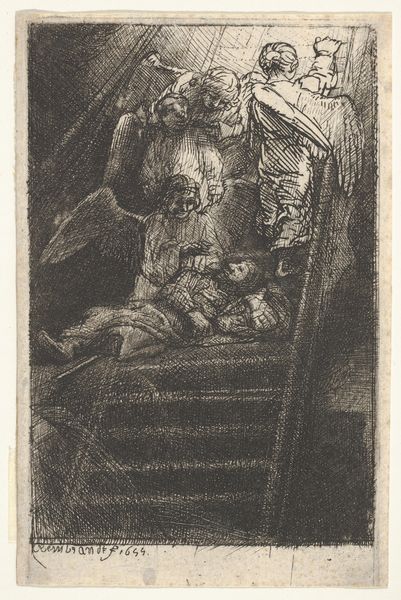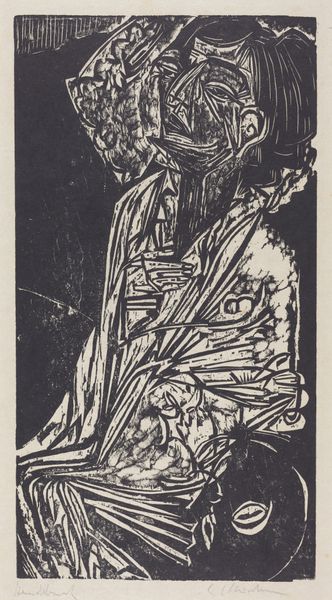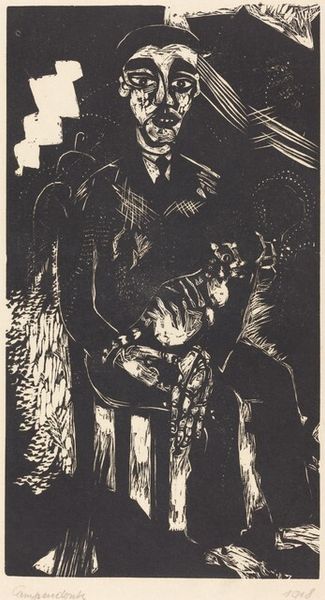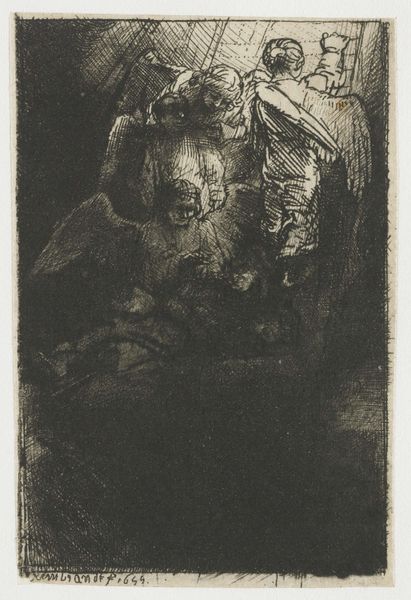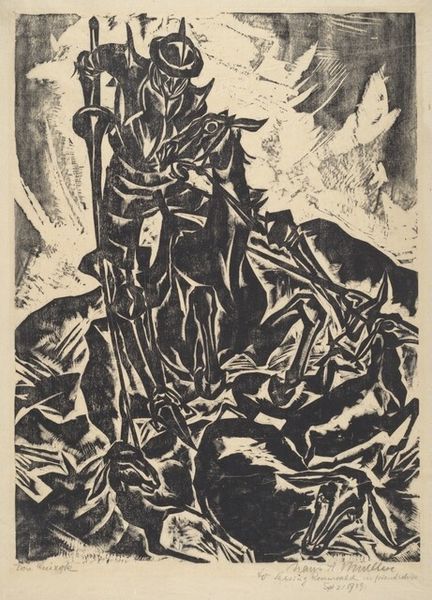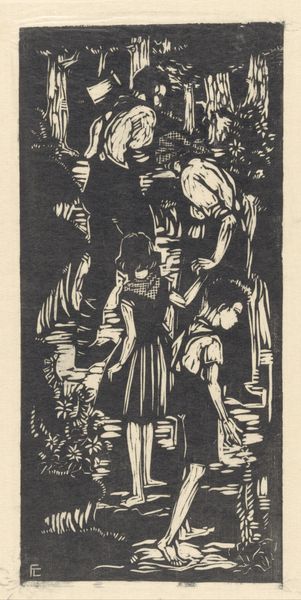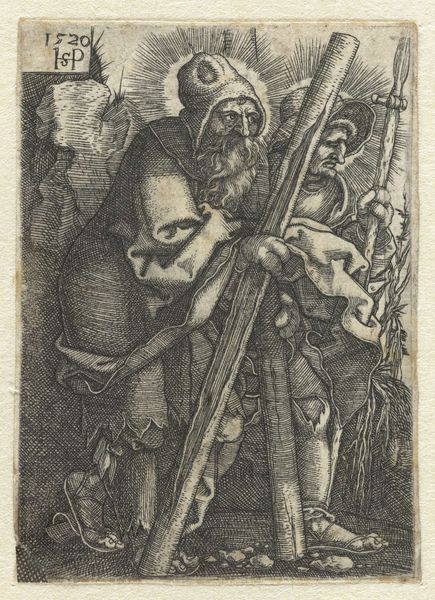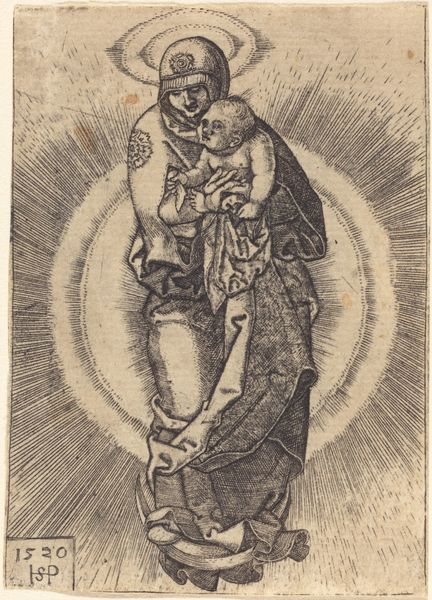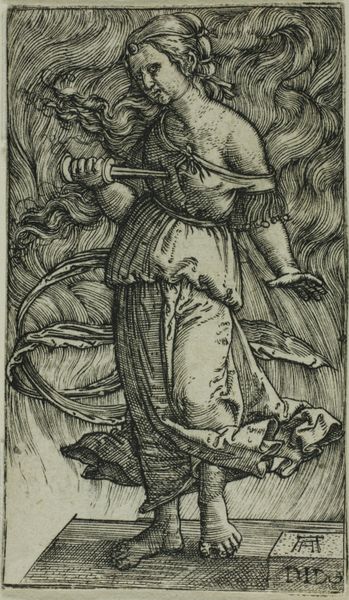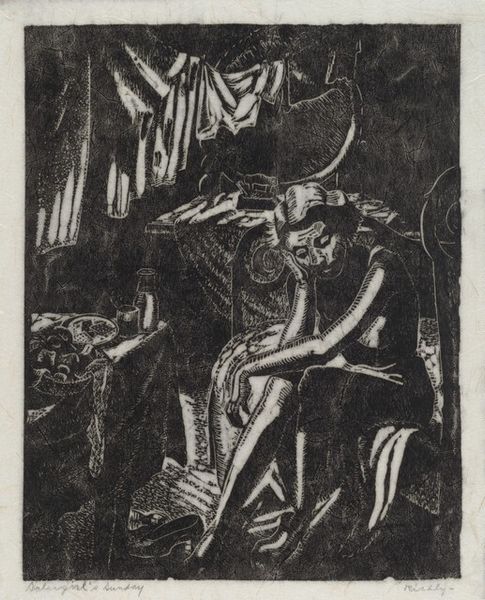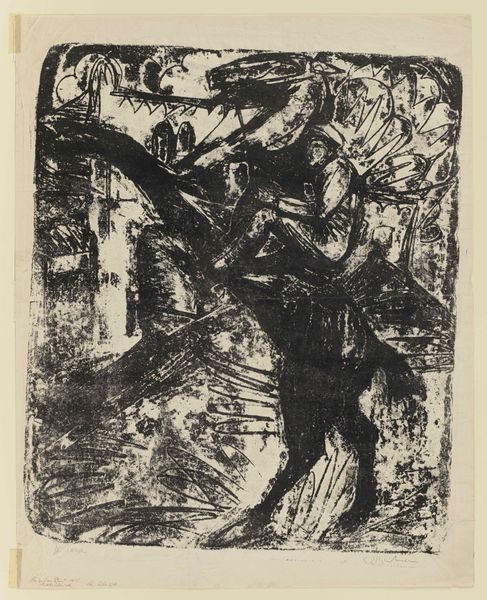
Dimensions: 7 9/16 x 4 3/16 in. (19.21 x 10.64 cm) (image, sheet)
Copyright: Public Domain
Editor: This is Urs Graf's "The Standard Bearer of Unterwalden," a woodcut from 1521. I'm struck by the stark contrast of black and white and the intricate details of the standard bearer's attire and the flag itself. It feels…intense. What can you tell me about this work, especially in the context of its time? Curator: That intensity you feel is quite palpable. Consider the historical context: the Swiss Confederacy, while nominally part of the Holy Roman Empire, was asserting its independence, often through military means. Graf, who was a mercenary himself, presents us with a complex figure. Is he a heroic symbol of freedom, or does this print subtly critique the violence inherent in state formation and early capitalism? What does it mean to depict a soldier carrying a banner that bears both religious and state imagery? Editor: That's interesting. I hadn't really thought about the possibility of critique. I guess I assumed it was a straightforward, patriotic image. So, you’re suggesting that it might be a more nuanced commentary on power and conflict? Curator: Precisely. Consider, too, that Graf was a controversial figure. Exploring those contradictions between the personal and the political, we might find him questioning the glorification of warfare, and perhaps revealing anxieties around the evolving role of mercenaries and the shifting socio-political landscape. Look at the small details, for example, the sword at the soldier’s hip. What statement do you think this print is making about violence? Editor: Wow, I see the artwork in a different light now. Initially, I appreciated it aesthetically, but understanding Graf’s potential message transforms my understanding of it. The imagery feels so much more complicated than I first believed. Curator: It reveals how art objects operate as reflections, but also interrogations, of power and identity, pushing us to confront uncomfortable questions about history and its continued relevance.
Comments
minneapolisinstituteofart about 2 years ago
⋮
A new type of foot soldier emerged in the sixteenth century-the proud, self-conscious mercenary who cast his lot wherever there was money to be made. Urs Graf glorified this flamboyant type in this unusual white-line woodcut, in which the design is carved into the woodblock and much of the surface is inked. Graf's dramatic technique adds to the figure's brio as he poses in his fashionably slashed costume, with its ostrich plumes and ribbons. Graf was himself a mercenary, with a particularly roguish reputation. He was jailed repeatedly, played vicious pranks, and consorted with harlots. As if to underscore the point, he included a dagger in his monogram, seen near the date on this print.
Join the conversation
Join millions of artists and users on Artera today and experience the ultimate creative platform.
